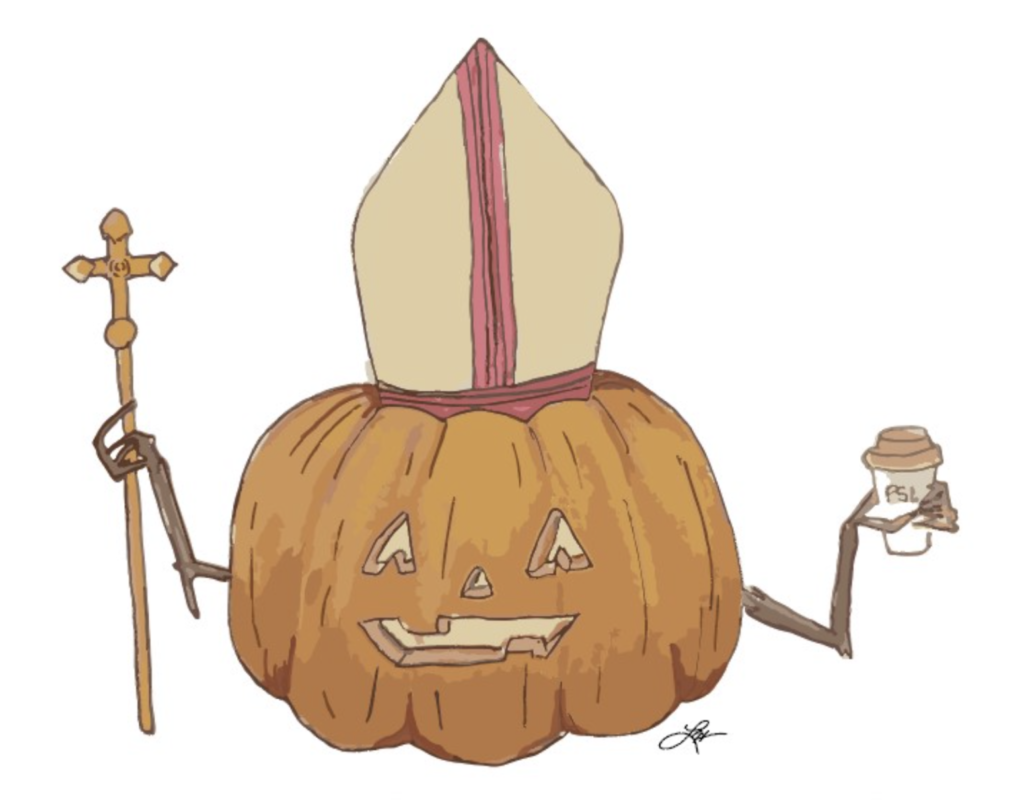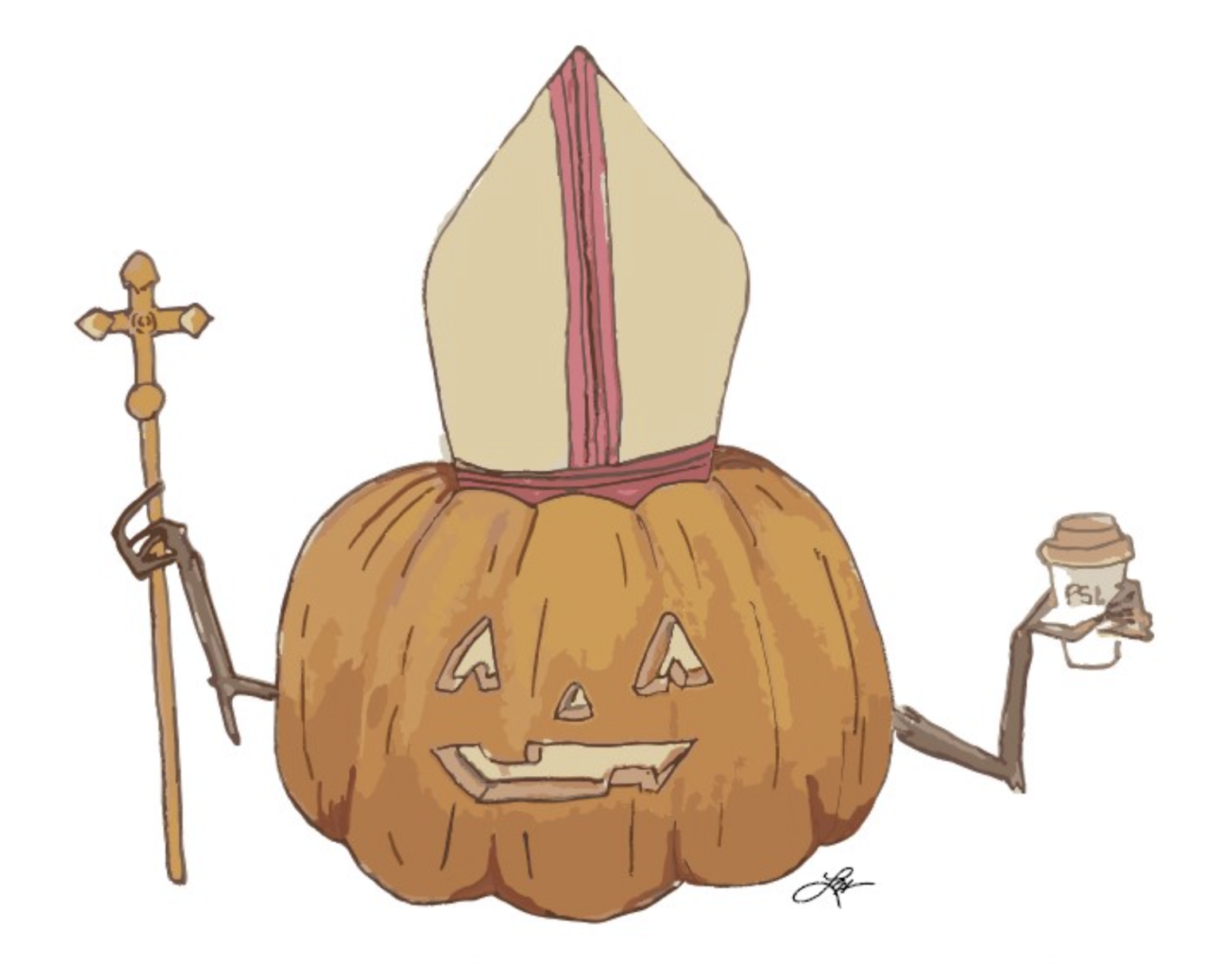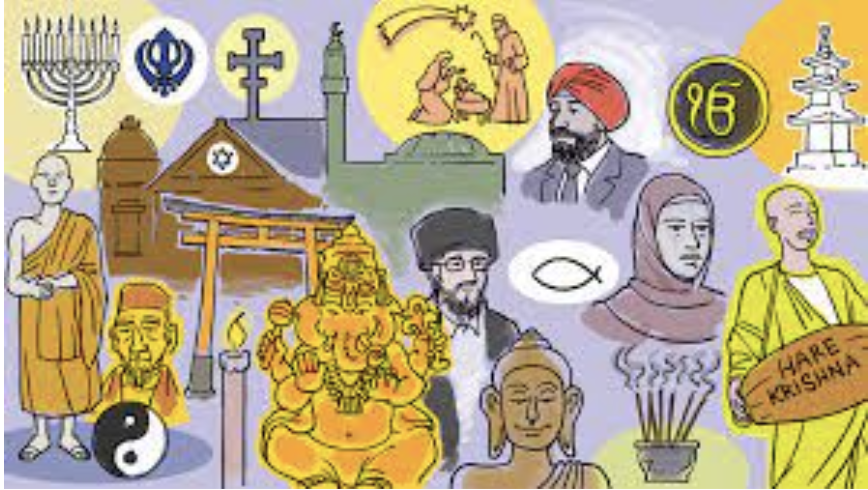
Part of the Diplomatic Dish series
By Joshua Walker
Art by Lily Hearn
Every October 31st, children and adults in Western Europe, the United States, Canada, and elsewhere don their favorite costumes and wander the streets in search of the best candy spots. Pumpkin carving is a common activity in the weeks leading up to Halloween, and following the spooky night, November exhibits dishes featuring the orange gourd – anything from pumpkin pasta to pumpkin curry and, of course, pumpkin pie. This year alone, it is estimated Americans will spend over $840 million just on carving pumpkins, which is a 12% increase from 2022. But how did pumpkins and Halloween become such an intrinsic part of Western culture? It turns out the answer is found in ancient Celtic tradition, an Irish trickster, and the Roman Catholic Church.
The Ancient Celts of Western and Northern Europe annually celebrated what they called Samhain, or “summer’s end” in Gaelic, each November 1st. The festival marked the beginning of the harsh winter, often leading to a high death count in the coming months, and the arrival of the spirits of the dead on Earth as the nights became longer. During this time of year, it quickly became tradition to dress in dark, ghostly clothing in an effort to prevent wandering spirits from bothering you. After the rise of the Roman Empire and the rapid diffusion of Catholicism in the early centuries CE, the Church sought to extinguish any traces of what they deemed “pagan holidays.” In the 800s, Pope Gregory III declared November 1st All Saints’ Day — or Alholowmesse (All Hallows, or “saints”) in Middle English — to honor the Church’s saints and martyrs. The evening before was called All Hallows’ Eve, or Halloween. Eventually, the Celtic pagan traditions of Samhain quickly fused into the Catholic event, a fusion that persisted after the fall of the Roman Empire in the fifth century and the subsequent rise of European feudal states.
By the 19th century, the legend of a man named Stingy Jack was commonplace in Irish folklore. According to myth, he had repeatedly tricked the Devil during his lifetime, and both Heaven and Hell refused him entry upon his untimely demise. Forced to roam Earth endlessly after death, the Devil gave Jack a coal ember to light his way. Soon, the Irish and Scots began making their own version of Jack out of carved turnips and beets to light the path of wandering spirits.
Before the earliest European settlers and colonists arrived, Native Americans revered the indigenous pumpkin as a major part of their diet. The flesh was used for soups or dried to make a kind of flour, the seeds were roasted as a snack, and the skin was dried to make mats. The orange gourd became a popular Jack-o’-lantern substitute when Irish and Scottish immigrants came to the U.S. in the mid-19th century, an immigration wave encouraged by the promise of religious freedom and stronger property rights. While the traditional myths of spirits and Stingy Jack have subsided for a more consumer, family-friendly approach to Halloween, the humble pumpkin has become synonymous with North American autumnal culture. So, the next time you’re enjoying a pumpkin spice latte or Thanksgiving pie, you can thank the Celts for their reverence of the dead, the Catholic Church for its terrifying ability to assimilate other religions via conquest, and Stingy Jack for being a devilish trickster.


